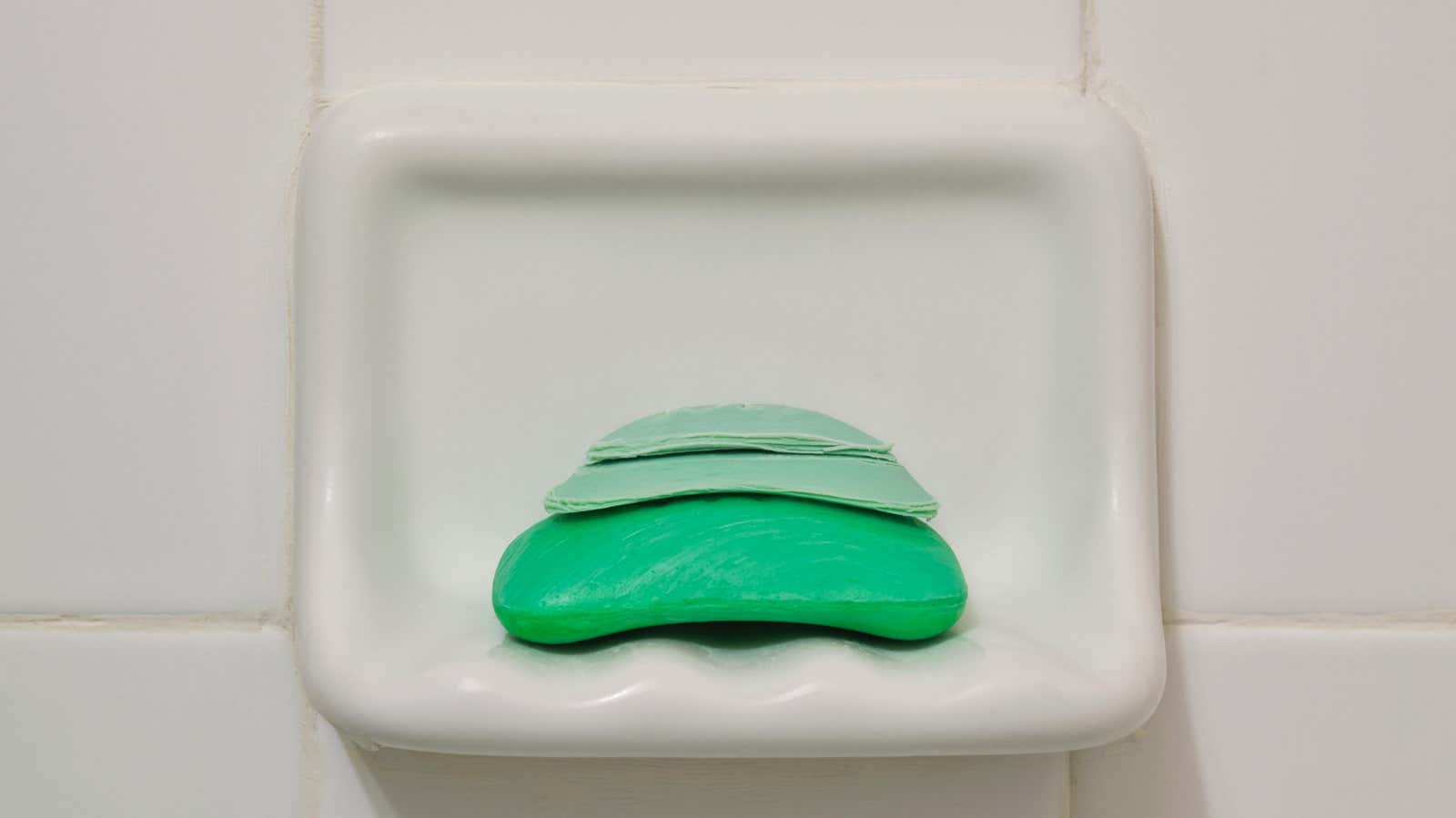How to Turn Old Soap Bars Into “new” Soap Bars

Whether you’re looking to save a couple of cents, transition to a zero-waste lifestyle, or prepare for a post-apocalyptic lifestyle, recycling old soap residue into new tiles is a great start. It’s easy, fun, and you can tell yourself that your creation is as good as store-bought soap.
The basic principle behind soap re-sanding is simple: you melt old bars of soap and then press them into a new bar, but there is no single perfect recipe or method. How you do this depends on how much effort you want to put into the project. Below are three methods for cycling soap, presented in order from “barely” to “a ton.”
The easiest way to turn soap bars into a bar of soap
The soapball method is perfect for stereotypical single guys moving into their first apartment and newly divorced dads who have no idea how to live their lives at the most basic level. Here is the step by step:
- Collect the soap bars.
- Place them in a plastic bag.
- Place them in the microwave for a minute or two. (The exact time depends on the amount of soap and the power of your microwave, but you want the soap to be mild.)
- When the softened soap is cool enough, mix it into a ball.
- Place it in the freezer until it becomes firm.
- Remove the bag and you end up with a shapeless “bar” of soap, which is ugly and likely to fall apart, but will wash your hands just fine. Great for use in a garage or basement sink.
If you have too much self-esteem to wash your face with a soap ball that you made in three minutes, the next method is a step forward.
Medium Soap Recycling Recipe
- Collect the soap bars.
- Grate them on a cheese grater or cut into small pieces.
- Place the soap chips in a microwave-safe dish and add water (about a tablespoon per cup of soap).
- Microwave for about 30 seconds, then stir.
- Repeat as many times as needed until you have a bowl of soft but thick soapy mass.
- Line a small box, like the one your phone came in, with plastic wrap.
- Pour the soap mixture into the box.
- Wait a few days for the mixture to completely harden and dry, and voila : you have your regular bar of soap.
This method will most likely result in a lumpy gray soap. It’ll clear your hands, but you won’t end up on the cover of Soap Monthly or anything like that. For this you will need…
An Ultra-Complete Method for Making Luxurious Soaps
I looked at a lot of YouTube soap making tutorials (it’s a surprisingly popular genre) and synthesized the following basic recipe. Keep in mind that since the ingredients in soap vary from brand to brand, this is not an exact science. So see what works best for you.
- Rub the soap. The finer you grate it, the less lumpy the final product will be.
- Put the grated soap flakes into a saucepan.
- Add water. Recipes vary in the amount of water. Some say 1 part water to 2 parts soap. Some say, “Just add enough so that the soap doesn’t burn on the stove .”
- Optional: Some soap making recipes suggest leaving the mixture overnight.
- Turn the burner on low/medium and stir the soapy soup every five minutes or so until it is smooth. This may take a long time, such as an hour or two. Some recipes say to bring it to a boil, but that seems like overkill.
- Alternatively, you can make a steamer by placing your soap in a heat-resistant glass bowl and dropping it into simmering water in a saucepan.
- The mixture will not completely melt. It should have the consistency of mashed potatoes or paste. Don’t let it burn out.
- Remove from fire.
- Some home soap makers recommend adding light vegetable oil at this point, a tablespoon for each cup of soap, and stirring. I’m not sure of the benefits, but it can counteract the flaking that comes from recycled soap.
- Personalize your soap: If you need an exfoliant, try dry oatmeal. Add a few drops of fragrance or essential oil to make it smell nice (although it will smell like the old soap mixture you used), or add a few drops of food coloring to change the color you have.
- Add a little fat to prevent sticking, then spoon the soap into the molds. You can use muffin tins, ice cube tins, or get creative with cookie cutters.
- Let it harden. It may take a whole week, but will probably be ready in a couple of days.
Boil-free method of making soap from scraps.
If all this cooking isn’t for you,this YouTuber presents an alternative soap making method that doesn’t require soap melting. Instead, you put the leftover soap and water in a wooden box and press it down with the clamps until the new bar is held together. Anyway, this is the idea.
Is soap recycling disgusting?
Old bars of soap are clean (I mean it’s soap ), so there’s no rational reason to use soap made from old bars, but it still seems questionable. Imagine if you walked into a hotel and found your bathroom full of soap made from recycled bars from people’s rooms. Rough, right? Be aware of the disgust others may feel and don’t put homemade soap in the guest bathroom unless you love your guests.
If you’ve ever made soap from old wood chips, leave your tips in the comments.